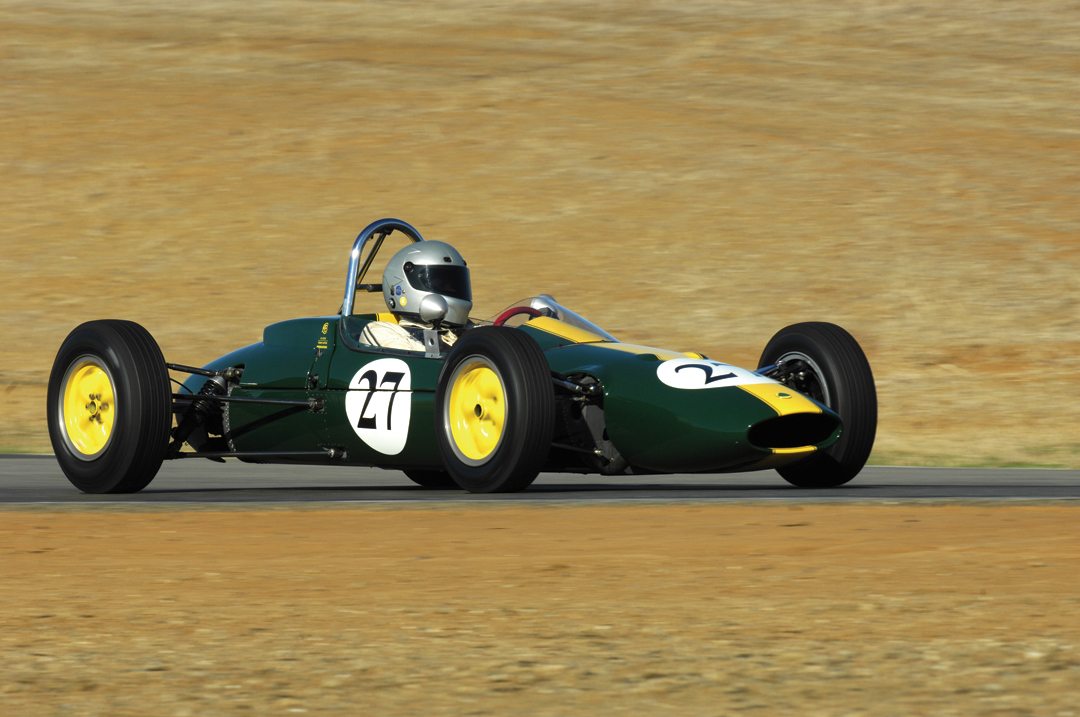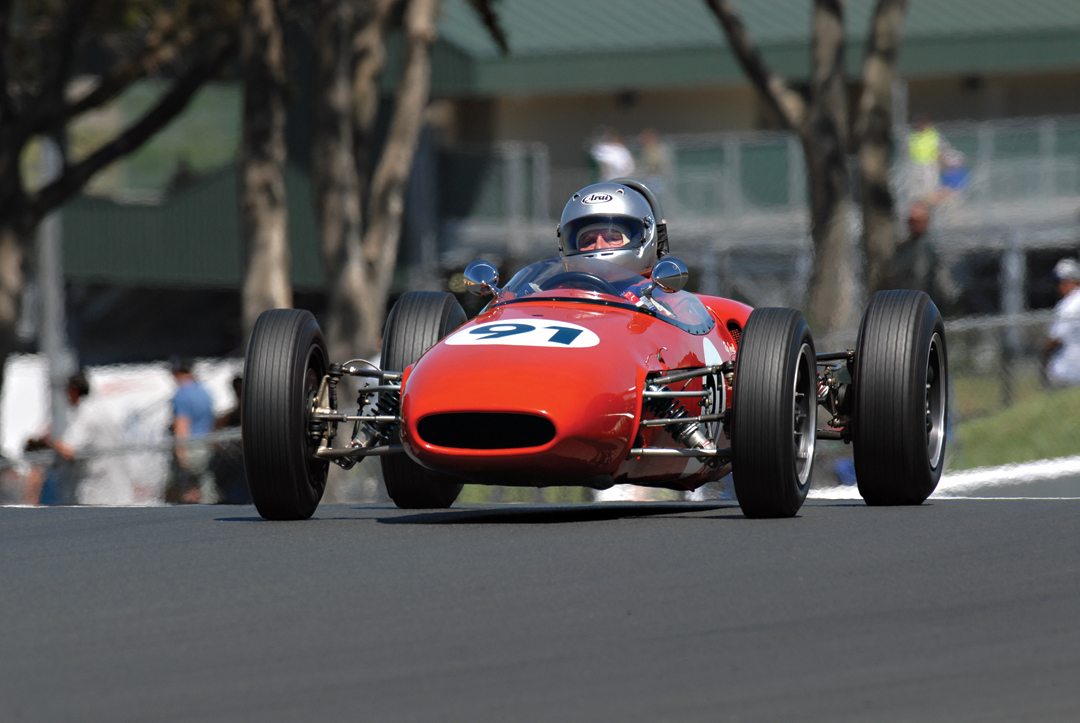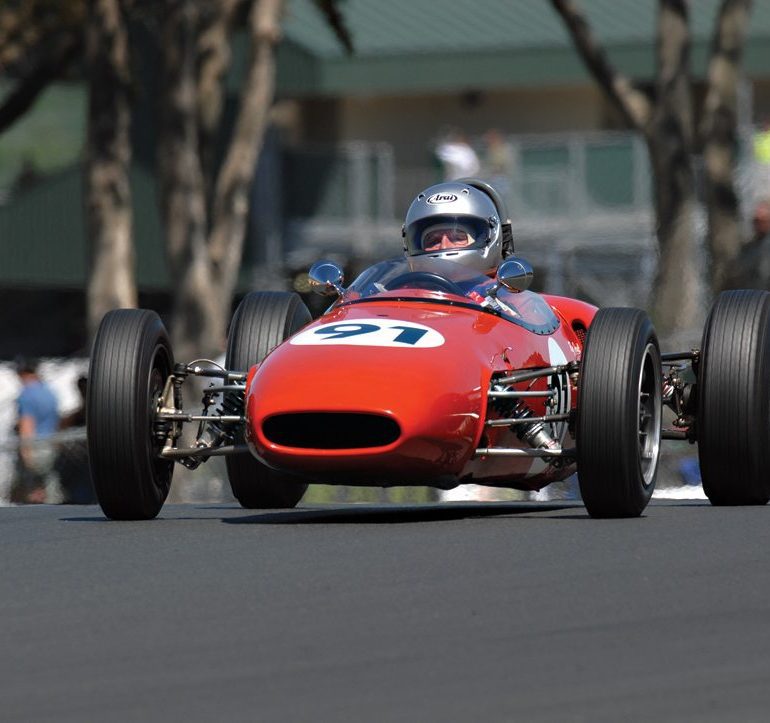The Formula Junior category was introduced in Italy in 1958 by Count Giovanni Lurani, and in 1959, it became an International Formula. Shortly thereafter, in 1960, the British began to take a serious interest in the category that began the rivalry between British and Italian cars.
The original FIA Formula Junior regulations defined the cars as single-seater racing cars with the mechanical components coming from a touring car of which a minimum of 1,000 units had been produced within 12 months’ time. The chassis was built within certain dimensions and to a weight minimum. The engine, gearbox, brakes, etc., had to be as derived from a production touring car. Therefore, there existed a great variety of choices on different cars, such as engines from BMC, FIAT, and Ford and gearboxes from Citroen, Renault, and VW.
Formula Junior was, in effect, Formula 2 and Formula 3 combined, with a maximum engine capacity of 1 liter or 1.1 liters, depending on the car’s weight. It was a single-seater training ground for young drivers from 1959 to 1963. It produced an endless list of future Formula One stars including Chris Amon, Richard Attwood, Peter Arundell, Jim Clark, Denis Hulme, Peter Revson, Jochen Rindt, Joe Siffert, and John Surtees.
Lotus was the dominant force in Formula Junior, wining the British National Championship from 1960–1963. However, a dozen other small companies also produced cars including Bandini, Brabham, Cooper, Elva, Lola, Merlyn, Osca, Stanguellini, and Taraschi.
These were, in effect, mini-Grand Prix teams with first-class drivers, designers, and mechanics. Ironically, Formula Junior, which was started as a cost-saving effort, was ultimately stopped because the Formula One technology of the day was being used in this lower formula. The monocoque design of the Lotus 27 was a prime example of this technology.
Today, the large number of premium venues combined with very competitive grids has translated into a very strong market for Formula Juniors, especially in Europe. Having a legitimate Formula Junior allows one the opportunity to race at Goodwood, the Monaco Historic, and the Monterey Historic, to name just a few events.
1963 Lotus 27

Colin Chapman’s Lotus Cars of Norfolk, England, was well known for its successful lightweight, nimble single-seater and sports racing cars. Chapman’s background as an aircraft, light-metals, stress engineer helped him with this design philosophy. Formula Junior was the Formula 2 and Formula 3 series combined from 1959 to 1963, in order to cut costs and have more competitive racing. Ironically, the Lotus 27 model brought the airplane and Formula One technology of the day to the lower series and raised the cost of competition. In 1964, Formula Junior came to an end and Formula 2 and 3 returned. The 27 had an aluminum monocoque, front inboard springs and shocks, wishbone suspension, disc brakes, and 13-inch magnesium wheels. It was powered by the Cosworth-developed Ford 105E engine mated to a Hewland 5-speed gearbox. Peter Arundel took the 27 to the Junior championship in 1963 over Denis Hulme’s Brabham BT6. Today, this car is considered the ultimate Junior and an example of Chapman’s design and engineering excellence.
1963 Brabham BT6

World champion Jack Brabham had started producing single-seater and sports racing cars in England in the early 1960s. They were known to be sturdy, good handling, reliable racing cars. The 1963 Junior entry was the BT6. It was a tubular space frame, with wishbone suspension, outboard springs and shocks, disc brakes, and 13-inch magnesium wheels. The engine was a 1.1-liter Ford 105E modified by Holbay with a Hewland 5-speed transmission. Denis Hulme drove the works entry with great success, narrowly losing the Junior title to Peter Arundel’s Lotus 27 at the last race of the season. The BT6 is a beautiful design and more user friendly than the Lotus 27. Today, it is a front-runner in the Junior series.
Criteria Used For Assessing Valuations for this Guide:
- Degree of Originality
- Overall Condition, Restoration
- Technology, Design, Coachbuilder
- Production Numbers/Rarity
- Competition History
- Ownership History, Documentation
- Modern Event Eligibility
Regional Variances
The prices stated in this guide are based on U.S. values. The values of historic racing cars can vary as much as 25%-35% in other countries, depending on local market appeal, currency rates, import duties, and VAT. Most of the time, we are able to document known sales or closed escrows, as they say in real estate. When this is not possible, a logical estimate of the car’s value is given, based on its sales history and relationship to cars of its type.
The prices stated in this guide are based on U.S. values. The values of historic racing cars can vary as much as 25%-35% in other countries, depending on local market appeal, currency rates, import duties, and VAT.
LEVEL |
VALUATION CATEGORIES |
|---|---|
I |
The best combination of all criteria. |
II |
Satisfies mid-range of criteria. |
III |
In need of restoration. Meets only a few points of criteria |




